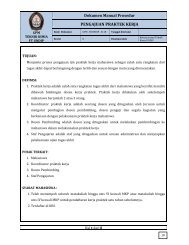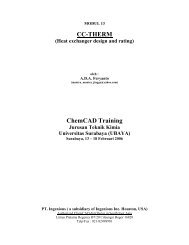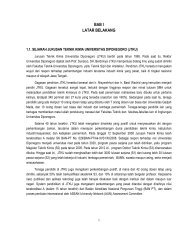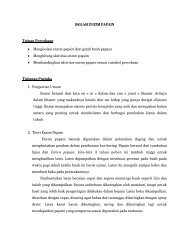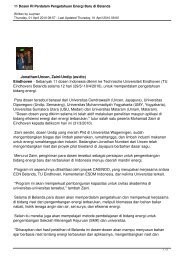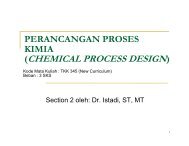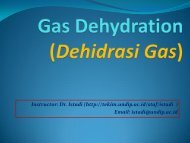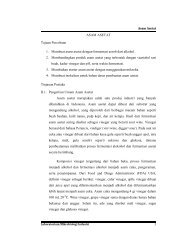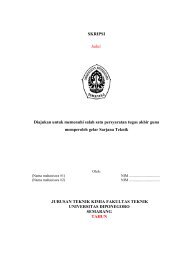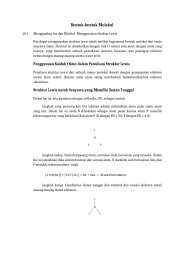Alkylation of Benzene by Propylene to Cumene 6
Alkylation of Benzene by Propylene to Cumene 6
Alkylation of Benzene by Propylene to Cumene 6
- No tags were found...
You also want an ePaper? Increase the reach of your titles
YUMPU automatically turns print PDFs into web optimized ePapers that Google loves.
6.2 Reaction-Engineering Analysis 181Figure 6.4 The variation <strong>of</strong> selectivity with the molar ratio benzene/propylene.6.2.4Chemical EquilibriumChemical equilibrium indicates that more than 99% conversion <strong>of</strong> propylene maybe achieved for benzene/propylene ratios larger than three. However, the selectivityremains a problem. Figure 6.4 shows the variation <strong>of</strong> selectivity defined ascumene formed per mole <strong>of</strong> propylene, when only di - isopropylbenzene is the<strong>by</strong>product. Increasing the ratio from 3 <strong>to</strong> 9 moles gives a significant selectivityimprovement from 82% <strong>to</strong> over 92%. From this point <strong>of</strong> view the performance <strong>of</strong>beta - zeolites reported in Table 6.6 seems <strong>to</strong> achieve its thermodynamic limit.Higher temperature is beneficial for getting higher yield, but the effect islimited.6.2.5KineticsThe examination <strong>of</strong> patents reveals that the operation conditions for the alkylation<strong>of</strong> benzene with propylene are temperatures between 150 and 230 ° C and pressuresbetween 25 and 35 bar. The catalyst productivity expressed as WHSV is in therange 1 – 10 (based on the reaction mixture) at benzene/propylene molar ratiosranging from 5 <strong>to</strong> 8.As mentioned, from the reaction kinetics viewpoint the behavior <strong>of</strong> zeolite catalystsshows large variability. In addition, the apparent kinetics can be affected <strong>by</strong>pore diffusion. The compilation <strong>of</strong> literature revealed some kinetic equations, buttheir applicability in a realistic design was questionable. In this section we illustratean approach that combines purely chemical reaction data with the evaluation<strong>of</strong> mass - transfer resistances. The source <strong>of</strong> kinetic data is a paper published <strong>by</strong>Corma et al. [7] dealing with MCM - 22 and beta - zeolites. The alkylation takes placein a down - flow liquid - phase microreac<strong>to</strong>r charged with catalyst diluted with carborundum.The particles are small (0.25 – 0.40 mm) and as a result there are nodiffusion and mass - transfer limitations.




